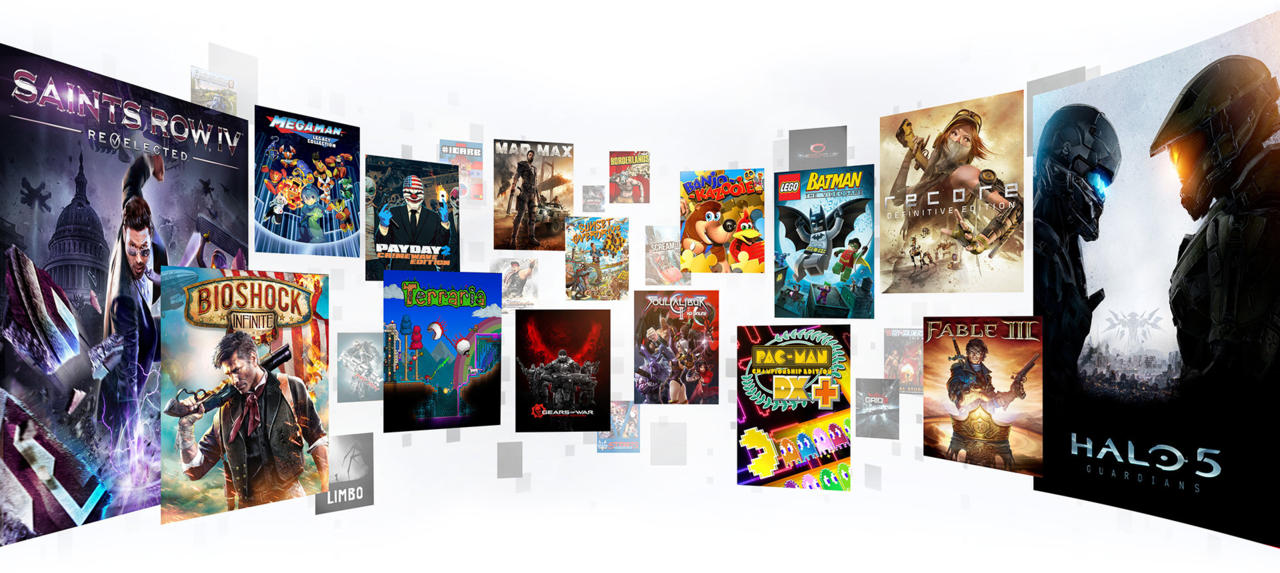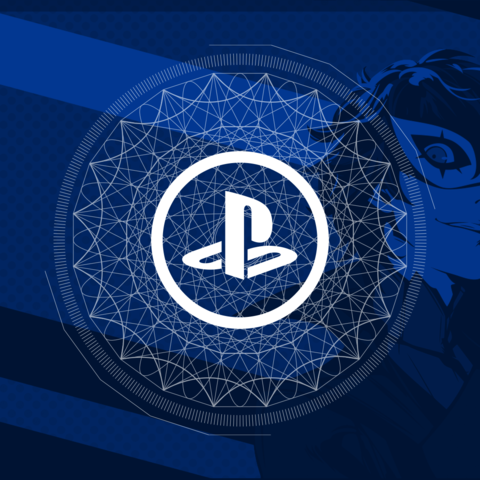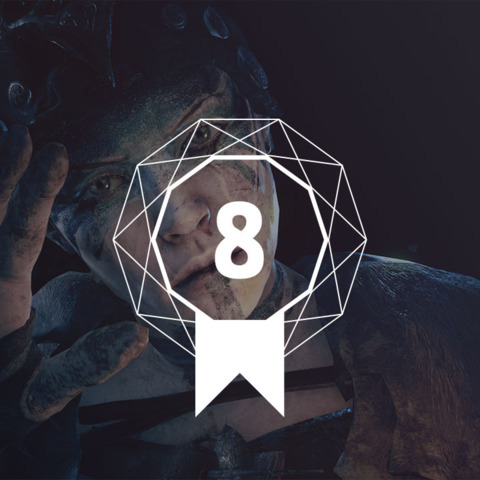Xbox One is now four years old, and its fourth year on the market felt both unsurprising and encouraging. It's difficult to know exactly how the system performed commercially because Microsoft has stopped sharing sales numbers, but Xbox boss Phil Spencer has made it clear that, for him and Microsoft, success is no longer gauged by Xbox One hardware sales. Microsoft has broadened its gaming aspirations, but in many ways, it's doubled down on its recent, user-friendly strategies with Xbox One, which has been promising.
With 2017 coming to a close, let's take a look back at the year that was for Xbox One.
Another Dose Of New Hardware, This Time With Meaningful Changes
Last year's Xbox One S was a solid hardware revision, providing a dramatic reduction in size, HDR support, and 4K Blu-ray playback capabilities. A small performance boost aside, however, it was effectively the same system that had launched back in 2013. The same can't be said of Xbox One X, which released worldwide in November.
Microsoft likes to tout that Xbox One X is the "world's most powerful console." As much as that sounds like a marketing line with little foundation in reality, it is true. Xbox One X is a powerhouse of a console, and one that's also incredibly well designed. That it manages to be so powerful but so quiet--and no bigger than an Xbox One S--is a feat of engineering.
Many of the games that have been updated to take advantage of the system's additional horsepower look stunning. Assassin's Creed Origins, Forza Motorsport 7, Wolfenstein II: The New Colossus, Gears of War 4, Hitman, Halo 5: Guardians, and others boast major improvements. Oftentimes, games even feature marked boosts to resolution and other areas over their PS4 Pro-enhanced counterparts.
But within those improvements, there has also been some degree of confusion. To its credit, Xbox One X does address one specific complaint about PS4 Pro: It allows you to filter your games to show only those with enhancement updates. However, it's unclear exactly what you're getting from any given game. Microsoft's website hosts a list of X-enhanced games along with indicators for those with HDR and 4K support, but is it native 4K, or a dynamic resolution? Do players have a choice between a mode favoring higher resolutions and one that offers steadier framerates and better effects? Finding out typically involves turning to third-party publications like Digital Foundry. It requires too much research on the part of Xbox One X owners to know what type of experience to expect from a game.
Another Crab's Treasure Is A Soulslike 3D Platformer | GameSpot Review Stellar Blade Review Super Monkey Ball Banana Rumble - Official Multiplayer Features Trailer Nintendo 64 – April 2024 Game Updates – Nintendo Switch Online Gori: Cuddly Carnage | Meow Launch Date Announcement Trailer PUBG | Erangel Classic Returns Genshin Impact - "Arlecchino: Afterglow of Calamity" | Collected Miscellany Marvel Rivals - Official Loki Character Reveal Trailer | The King of Yggsgard Fortnite Festival - Official Billie Eilish Cinematic Season 3 Trailer Remnant 2 - The Forgotten Kingdom | DLC Launch Trailer Stellar Blade - Official "The Journey: Part 2" Behind The Scenes Trailer | PS5 Games Dead by Daylight | Tome 19: Splendor | Reveal Trailer
Please enter your date of birth to view this video
By clicking 'enter', you agree to GameSpot's
Terms of Use and Privacy Policy
That said, as was the case with PS4 Pro, it's hard to complain about the general approach of a mid-generation hardware refresh, because it's purely optional. There are always going to be those who want better graphics and performance without building a costly PC, while others will prefer to keep playing games on their existing console. The Xbox One X feels like an ideal compromise for this point in time: It provides those who care about playing improved versions of games an option for doing so, but without splitting up the multiplayer userbase or taking anything away from those who are happy with what they have. There is a degree of compromise to this, as games still have to work on Xbox One. At least so far, no developer has shown a willingness to provide meaningfully different gameplay features on X. We don't know of any games that will operate like, for instance, Shadow of Mordor, which offered the Nemesis system on current-gen consoles but an extremely pared-back version on Xbox 360 and PS3. But it's a compromise that is necessary to avoid leaving anyone behind, and it isn't preventing the X from offering some truly gorgeous games.
Among the most welcome aspects of how Xbox One X operates are the improvements it presents across the board. Even without a patch, Xbox One games benefit from anisotropic filtering, as well as--in many cases--shorter load times, framerates that more consistently reach their targets, and improvements to dynamic resolution scaling, which allow games to run at higher resolutions more often. The results vary from game to game, but they are often impressive--and this even extends to Xbox 360 and original Xbox games. And whatever the case, you're getting all of these benefits at no additional cost beyond that of the system itself.
Continued Welcome Improvements To The Xbox Ecosystem
Those improvements to your existing game library play into a broader strategy that Microsoft has been pushing over the past two years. Since the introduction of backwards compatibility, it's felt as if Microsoft decided to listen to what fans want and give it to them. While you might be missing out on some of the exclusives that PS4 owners have access to (more on that later), the company has made owning an Xbox One a more attractive proposition than ever.
That starts with the continuation of backwards compatibility. We've seen more than 145 more games added this year, bringing the total to over 450 games. This allows you to play games you already own on Xbox One, oftentimes with various technical improvements, even on non-Xbox One X systems. It's maybe the single best feature to distinguish the system from the PS4 (whose closest equivalent is the subscription-based PlayStation Now), and it continues to be available for free.
Microsoft has presented Xbox One owners with what feels like a respectful ecosystem that is committed to keeping your game library playable--and better than ever, if you have an Xbox One X.
Backwards compatibility has only improved this year with the added support of original Xbox games. While the selection is limited and will not expand at the same semi-regular pace as the Xbox 360 backwards compatible library, it is nevertheless nice to be able to play Ninja Gaiden Black and company on Xbox One.
2017 also saw Microsoft enter a new space with Xbox Game Pass. For a flat fee, subscribers can play full versions of games from a library with more than 100 games. But unlike Netflix or PlayStation Now, these game are downloaded, rather than streamed. That avoids any potential latency issues, though large download sizes for some games mean slow connection speeds remain a problem.
Game Pass certainly provides value for some--$10/£8/AU$11 per month isn't terribly unreasonable for someone on a tight budget who doesn't care about owning games long-term. However, it still feels somewhat incomplete. Microsoft has spoken about the potential it has to support original game development, much in the same way that Netflix has its own original programming, but six months in, that's something we have yet to see bear fruit. ReCore's Definitive Edition was available right at launch on Game Pass, but that was an update to a year-old game. Whether the service ends up leading to the creation of new games remains to be seen.

Elsewhere, Microsoft has provided more Xbox Play Anywhere games, providing a great incentive to pick up digital copies of select games, which provide access on both Xbox One and Windows 10 PCs at no additional cost. And the company continues to pursue cross-play support. While Sony has refused to open the gates of PSN, Nintendo has acquiesced, allowing Xbox One and Switch owners to play games like Rocket League and Minecraft together. That's good news for everyone involved.
Frequent System Updates--And Finally Making Some Progress
The layout of the Xbox One's menus and dashboard have been a source of complaints since launch. Providing intuitive access to so many features is no easy task, and this has remained a work-in-progress for the past four years. As with Xbox 360, Microsoft has not been shy about overhauling the Xbox One dashboard. 2017 was the best example of that yet, as we saw not one but two major updates to the layout of the dashboard and Guide.
The first of these came in March. It dedicated far less space to the active game or app and provided shortcuts for options related to it, such as its game hub. It also finally made the Guide accessible with a single button press--something that had previously required two. The Guide itself was refined to provide quick access to Game DVR and other functionality. Other additions included an on-screen Achievement tracker, Mixer integration (known at the time as Beam), and the co-pilot accessibility feature.
Incredibly, just over four months later, Microsoft revealed another redesign. Speed and customization were touted as two of the key goals. Aesthetically, it looked nearly identical to the March update, but the main Home screen was changed completely. It now consisted of "content blocks," each of which is dedicated to an item of your choosing, such as a specific game. The Guide (still brought up with one press of the Xbox button) was reoriented to have a horizontal layout. The Fall update officially launched in October.

Xbox One's menus remain complex and intimidating, particularly for newcomers. Introducing such frequent shake-ups leads to confusion; just as you become accustomed to one setup, things are suddenly much different. As you'd expect, opinions vary about any such change, though the Fall update's Guide has at least surfaced frequently used features in an intelligent way. Microsoft has said that "small adjustments" are more likely than "big changes" in the future, which may be wise, though there is still work to be done.
Some Quality Games, But The Exclusives Gap Feels Bigger Than Ever
Xbox One is, ultimately, a machine meant to play games. And indeed, there were tons of great games to play throughout 2017. Microsoft certainly argues as much, but a problem arises when looking at exclusives on Xbox One versus PS4. Sony had a banner year, with Horizon: Zero Dawn, Yakuza 0, Uncharted: The Lost Legacy, Hellblade, Nioh, and Nier: Automata as its console exclusives. Furthermore, in many cases, third-party games were undeniably better on PS4, whether that was due to hardware (Xbox One lacks VR support to make Resident Evil 7's VR mode playable) or value considerations (Sony paying for timed-exclusive content in games like Destiny 2).
Another Crab's Treasure Is A Soulslike 3D Platformer | GameSpot Review Stellar Blade Review Super Monkey Ball Banana Rumble - Official Multiplayer Features Trailer Nintendo 64 – April 2024 Game Updates – Nintendo Switch Online Gori: Cuddly Carnage | Meow Launch Date Announcement Trailer PUBG | Erangel Classic Returns Genshin Impact - "Arlecchino: Afterglow of Calamity" | Collected Miscellany Marvel Rivals - Official Loki Character Reveal Trailer | The King of Yggsgard Fortnite Festival - Official Billie Eilish Cinematic Season 3 Trailer Remnant 2 - The Forgotten Kingdom | DLC Launch Trailer Stellar Blade - Official "The Journey: Part 2" Behind The Scenes Trailer | PS5 Games Dead by Daylight | Tome 19: Splendor | Reveal Trailer
Please enter your date of birth to view this video
By clicking 'enter', you agree to GameSpot's
Terms of Use and Privacy Policy
Xbox One owners do have a lot to play, however. Between the exclusives that were released and the numerous third-party games on the market, picking up an Xbox One in 2017 would not leave you without worthwhile games. (The frequent addition of new backwards-compatible games doesn't hurt, either.) And if you pick up an Xbox One X, you're now even getting the best version of these third-party games, with the exception of those with PS4-exclusive content.
Xbox One was not completely devoid of exclusives this year. Forza Motorsport 7 and Cuphead are both terrific, and PUBG's early access release is likely to be enormous, if the game's performance on PC (and that of Fortnite's Battle Royale update) are any indication. But the gulf in exclusives this year has felt particularly huge, no doubt due to the cancellation of Scalebound and delays of Crackdown 3 and Sea of Thieves (both of which were delayed in 2016, too). Whether it made the right calls or not, the end result was a year that was much stronger for the competition in terms of exclusive games.
Other Matters, In Brief
- It was another good, if unspectacular, year for Games With Gold. There were few newly released games (Slime Rancher being a notable exception), but we still got a total of 48 games that are playable on Xbox One, all of which stand to receive at least some benefits when played on Xbox One X.
- Xbox One remained the only console with access to EA Access. This remains a nice service for $30 per year, even offering recent games like Battlefield 1, Titanfall 2, and Mass Effect: Andromeda.
- 500 GB remains effectively the standard hard drive size for Xbox One. That felt small at launch in 2013, and the situation is only worse now. With games like Gears of War 4 and Halo 5: Guardians ballooning in size (the two combine to take up about 200 GB) and less than 400 GB being usable, it's possible to fill the drive with only a few games installed. Xbox One's external hard drive support is great, but the system could use more storage space right out of the box. This problem extends to Xbox One X, despite the 1 TB hard drive, due to the size of 4K assets.
- Kinect feels well and truly dead at the end of 2017; like the Xbox One S, Xbox One X lacks a port for the sensor, necessitating the use of a dongle. With little support and its voice commands looking more outclassed than ever by devices like the Amazon Echo, that's for the best.
Verdict
Even in lieu of a headlining game like a Halo FPS, this still has in many ways been a positive year for Xbox. It's unlikely to ever catch PS4 in terms of sales, and it remains to be seen if Microsoft can begin to match PS4's exclusive output. But after it started out this generation by turning off a huge number of people with the Xbox One's initial unveiling, Microsoft has continued to make amends by focusing on fan-friendly initiatives like backwards compatibility, Play Anywhere, and cross-play.
Microsoft says it has unannounced games coming, but there's no telling when; exclusives may remain an issue for the foreseeable future. There's no getting around that, but Microsoft has presented Xbox One owners with what feels like a respectful ecosystem that is committed to keeping your game library playable--and better than ever, if you have an Xbox One X. That may not be as flashy as a long list of exclusives, but it's a compelling argument to consider investing in Xbox.
| The Good | The Bad |
|---|---|
|
|









